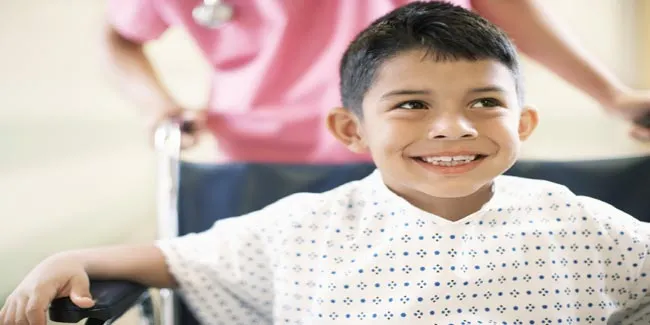
Fragile bones make us think of old people. But there are children who are born with bones so weak that even the slightest fall or sneeze can break them. Such a condition is named Osteogenesis Imperfecta (OI), or also known as brittle bone disease. It is a genetic disorder that occurs infrequently and interferes with the body's capacity to form healthy, hard collagen, an important protein for building strong bones.
Table of Content:-
In an exclsuive interaction with the editorial team of Onlymyhealth, our expert, Dr Bhumesh Tyagi, Consultant- General Medicine and Physician, Shardacare, Health City, Noida, explained that early diagnosis and care can enhance the quality of life in a child and prevent complications. Therefore, it is important to know the signs of OI that must never be overlooked by parents, caregivers, and medical professionals. Read ahead to know what he shared with us.
What is Osteogenesis Imperfecta?
Osteogenesis Imperfecta is a genetic condition that involves bones which fracture easily, commonly without apparent reason. There are a variety of OI, from mild to severe, depending on the particular genetic mutation.
Why Early Detection of Osteogenesis Imperfecta Matters
OI is more than cracked bones. It impacts growth, movement, hearing, oral health, and breathing. Detection of the early symptoms will result in early medical intervention, individualized treatment strategies, and improved long-term prognosis.
Signs of OI in Children You Should Not Overlook
1. Recurrent Bone Fractures
One of the most clear-cut indicators of OI is frequent fractures with little trauma. For instance, a child can break a bone from falling from a slight distance while playing gently or even during common activities such as rolling over or being picked up.

2. Bone Deformities
OI children frequently develop bowed legs, curved arms, or aberrant spinal curves (scoliosis or kyphosis) due to fractures that did not heal correctly or because of weakened bones.
3. Blue or Grey Tint to the Whites of the Eyes (Blue Sclera)
This is a characteristic sign of OI, particularly of milder forms. The white of the eye (sclera) can be blue or grey due to thinning connective tissue making the underlying blood vessels visible.
4. Short Stature
Kids with OI may not grow as quickly as other kids and might end up shorter than expected and smaller framed.
5. Loose Joints and Muscle Weakness
OI can lead to hypermobile joints, i.e., a child's joints can be more flexible than normal, and thus are more likely to get sprained or dislocated with frequent occurrences combined with overall muscle weakness.
6. Dental Problems (Dentinogenesis Imperfecta)
Teeth can be affected by OI, making them brittle, blue-grey or yellow-brown in color, and more susceptible to cavities or breakage.
7. Easy Bruising and Skin Fragility
Some kids with OI bruise easily and have fragile skin that tears upon minor injury.
When Should You Visit a Doctor?
In case your child develops any combination of the symptoms, particularly recurrent fractures without obvious reason, refer them to a pediatrician or geneticist. Diagnosis is usually by medical history assessment, genetic tests, bone density measurement, and X-rays.

How Is OI Treated?
Dr Tyagi highlighted that although there is no treatment for Osteogenesis Imperfecta, management involves:
- Fracture prevention and treatment
- Strengthening of muscles and mobility through physical therapy
- Severe bone deformity treatment through orthopedic surgeries
- Better bone density in certain cases through bisphosphonate therapy
- Regular hearing and dental check-ups
- Psychological and emotional support for the child and family
Bottomline
Life with Osteogenesis Imperfecta is challenging, but early detection of symptoms can result in timely treatment, which can enable children to live fuller, safer, and more active lives. Parents and caregivers are advised to follow their instincts, if your child appears to break bones too easily or presents other ominous symptoms, do not dismiss them. Consult a doctor immediately.
[Disclaimer: This is for informational purposes only and not intended as a substitute for professional medical guidance. Always seek a healthcare professional's advice for diagnosis and treatment.]
Also watch this video
How we keep this article up to date:
We work with experts and keep a close eye on the latest in health and wellness. Whenever there is a new research or helpful information, we update our articles with accurate and useful advice.
Current Version